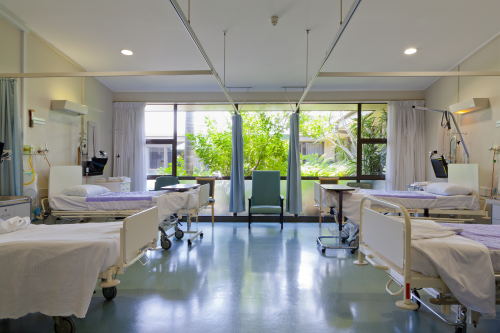 After hand hygiene, the second cornerstone of infection control is using basic knowledge about disease transmission in and from the environment. Patients need a clean, safe
environment. This includes clean
equipment, clean rooms, and clean linens.
When you look around your facility, look at everything and ask yourself ‘How
clean is that?’ To know if something is
clean, you’ve got to know:
After hand hygiene, the second cornerstone of infection control is using basic knowledge about disease transmission in and from the environment. Patients need a clean, safe
environment. This includes clean
equipment, clean rooms, and clean linens.
When you look around your facility, look at everything and ask yourself ‘How
clean is that?’ To know if something is
clean, you’ve got to know:- Who cleaned it?
- How was it cleaned?
- How has it been kept clean?
And the flashlights? They are left on the work counter in
the ICU patient room for pupil checks.
Housekeeping didn’t clean them, neither did nursing. “Orphan items,” things with no home and nobody to clean them. Everyone assuming somebody else was doing it. Do you have some of
these? Don't know til you ask.
How something was cleaned is also important. Is your staff using an approved
disinfectant? Are they using it
correctly? A story from the lovely IP
who trained me in my first job, that I’ve never forgotten: I was making rounds in the operating room. In a work room, I opened a cabinet to find
dozens of bottles of isopropyl alcohol.
Having not been an OR nurse, I asked the technician nearby what all the
alcohol was for (my primary concern then being a large quantity of flammable liquid
not stored in a proper cabinet). She
said to me, ‘We use it to clean the counters.’ Eyebrows raised, I said, ‘Show me.’ She said, ‘When an OR case is completed, we
sterilize the counters with alcohol. We
pour a half bottle of alcohol on the steel counters and wipe it off.’ I immediately met with the director to discuss
what is meant by cleaning, what is sterilizing, and what products are
appropriate and approved for use after an OR case. You must always say ‘Show me.’ You’ll often be surprised by what you see. What have you seen for cleaning methods?
Lastly, even when something has been cleaned, you’ve got to
keep it clean until it’s used. Clean
linens on a bed are ready for use. But if
that bed is pushed into the hallway when it’s not needed for a while, and a lot
of traffic passes by it, and occasionally someone puts items down on it, or
even sits on it, and then it goes back into a patient
room, it’s not really clean anymore, is it? Not
as clean as it could or should be. I
find these beds often in and around the emergency department. The staff tells me they don’t have a place
for the extra bed at the moment. They
can’t put it in storage because admissions are unpredictable: they might need
it shortly. That’s fine, you don’t need
to move the bed. You do need to take the
sheets off, though, and put on clean ones for the next patient. Once clean, kept clean. Apply this rule always.
There is much, much more to keeping a clean environment than
what’s here. But this is the simple, “Florence
Nightingale” approach. I’ll talk more
about cleaning and disinfection in another post. I’ll probably call it “Why I Love Vendors.” Which I do.
No comments:
Post a Comment